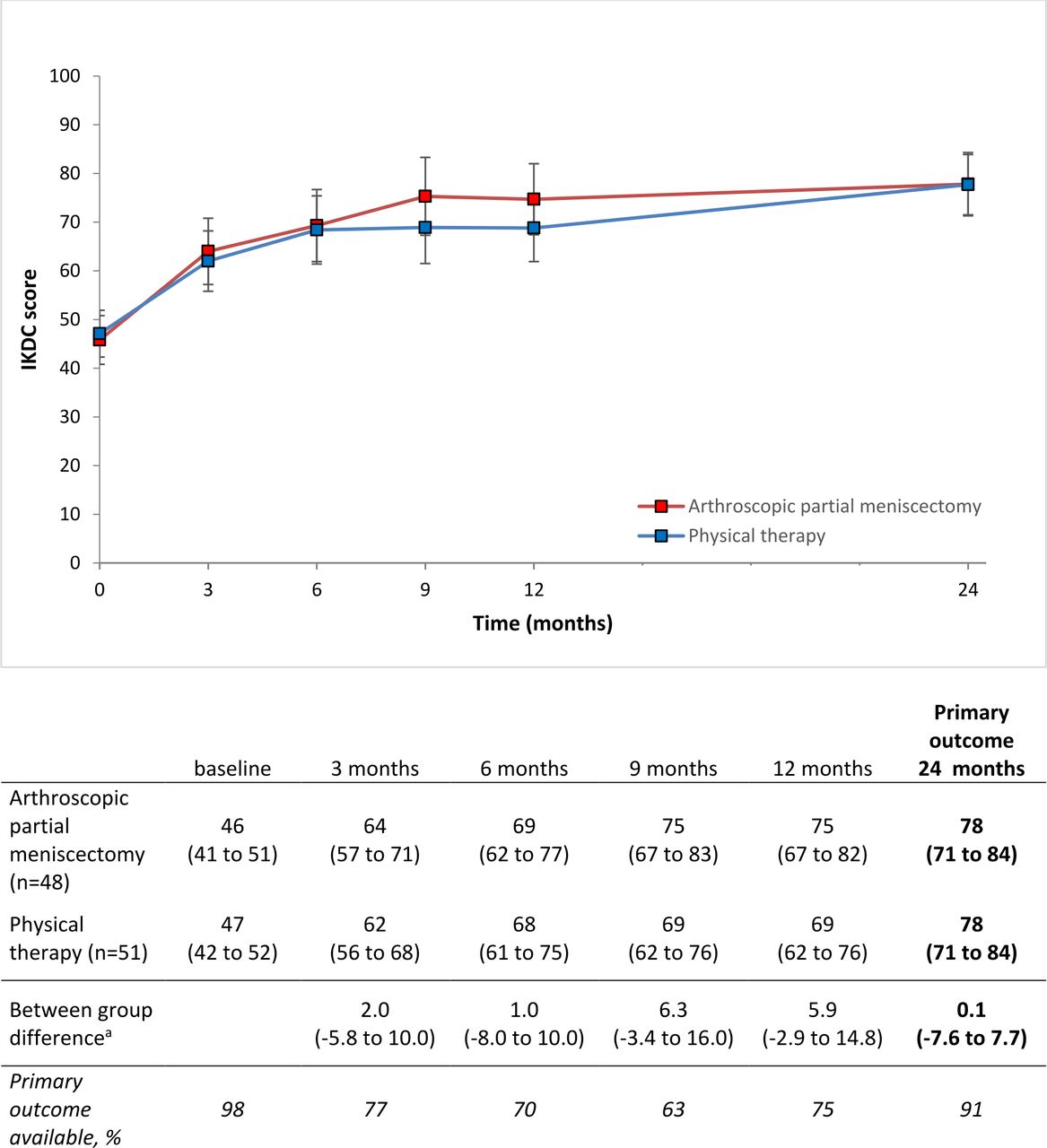Traumatic meniscal tears in young patients are usually treated surgically, but evidence from clinical trials is lacking. In this blog we explain the results of the first randomised controlled trial (recently published in BJSM) that compared surgical to non-operative treatment in young patients with traumatic meniscal tears. This study took almost 8 years to complete and was a collaboration of 8 hospitals in the Netherlands.
Why is this study important?
Young patients with a traumatic meniscal tear are usually treated surgically, that can be an arthroscopic partial meniscectomy or meniscal repair. Arthroscopic partial meniscectomy is the most frequently performed orthopaedic surgery in the world and about 40% is performed in patients under 45 years. Evidence from studies on older patients with degenerative meniscal tears showed that surgical treatment has no benefit compared to non-operative treatment, but there are no high level studies that compared these treatments in younger patients with traumatic meniscal tears. Since evidence for the most optimal treatment for young patients with traumatic meniscal tears is lacking, we conducted a randomised controlled trial in this patient group comparing arthroscopic partial meniscectomy with physical therapy.
How did the study go about this?
In the randomised controlled trial called the Study of Traumatic meniscal tears: Arthroscopic Resection vs Rehabilitation (STARR) trial we included patients aged 18 to 45 years with a traumatic meniscal tear and without radiographic signs of osteoarthritis. Patients were randomised to arthroscopic partial meniscectomy (surgery within 6 weeks after randomisation) or physical therapy (at least three months of physical therapy and home exercises). Our primary outcome the International Knee Documentation Committee (IKDC) score in both treatment groups at 24 months follow-up. The IKDC score is a questionnaire that measures patients’ perception of symptoms, knee function and ability to participate in sports activities.
What did the study find?
We included 100 patients, 49 patients were randomised to arthroscopic partial meniscectomy and 51 patients to physical therapy. In the physical therapy group 21 patients (41%) underwent a delayed arthroscopic partial meniscectomy during the follow-up period of 24 months because of persistent complaints. Both groups improved in IKDC score during the follow-up period of 24 months. At 24 months we did not find that arthroscopic partial meniscectomy is superior to physical therapy in IKDC score at 24 months (between group difference 0.1, 95% confidence interval -7.6 to 7.7; p-value 0.99).

What are the key take-home points?
Young patients (aged 18-45 years) with traumatic meniscal tears who were treated with arthroscopic partial meniscectomy, compared with those who had physical therapy plus optional delayed arthroscopic partial meniscectomy, had similar perceptions of symptoms, knee function, and ability to participate in sports at 24-months follow-up. 59% of the patients randomised to physical therapy did not undergo delayed arthroscopic partial meniscectomy during the follow-up period. Results from this study suggest that there is no need to consider arthroscopic partial meniscectomy to be the first-line treatment in patients with a traumatic meniscal tear and physical therapy with optional delayed arthroscopic partial meniscectomy may instead be appropriate.
Author and Affiliation:
Sabine van der Graaff. MD, PhD candidate dept. Orthopaedics and Sports Medicine, Erasmus MC, Rotterdam, the Netherlands
Reference: , et al. Arthroscopic partial meniscectomy versus physical therapy for traumatic meniscal tears in a young study population: a randomised controlled trial